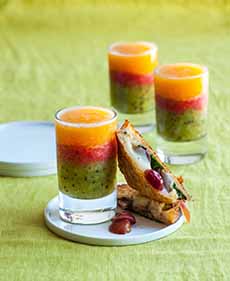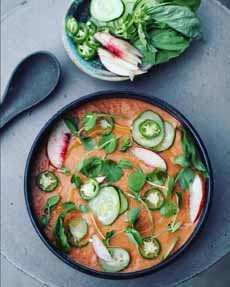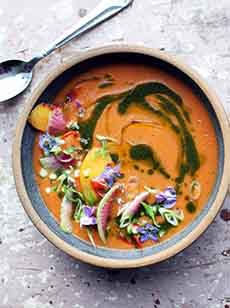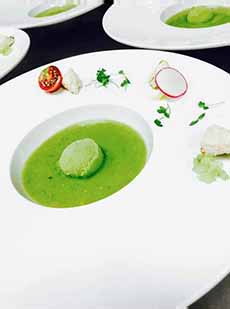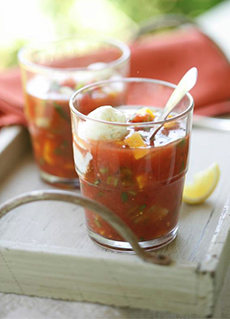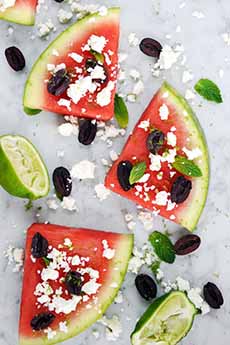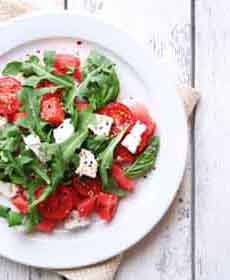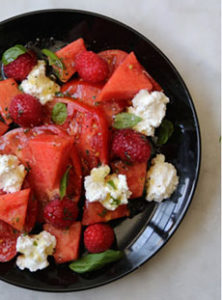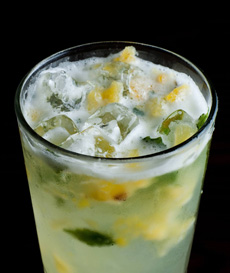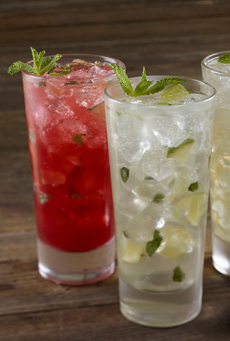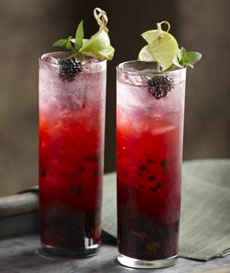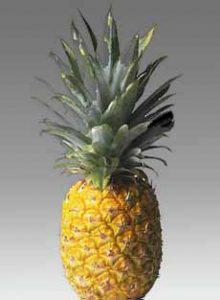|

[1] A bag of frozen raspberries turned into sugar-free soft serve (all photos © Yonanas).
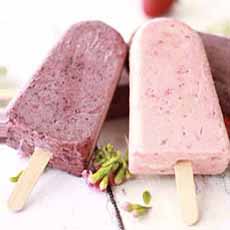
[2] Turn the soft-serve into ice pops.
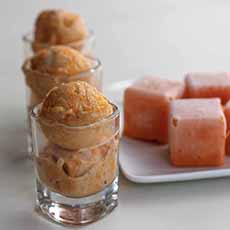
[3] Pumpkin Yonanas with pumpkin pie spices and red wine ice cubes.
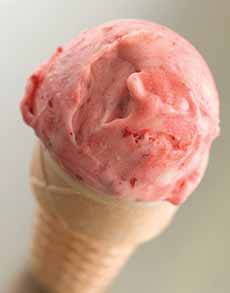
[4] How about a Yonanas cone?
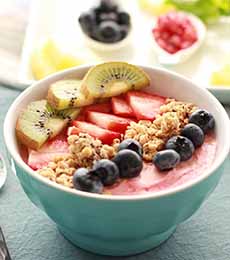
[5] Call it a sundae or a breakfast bowl.
|
|
July is National Ice Cream Month, and a hot month at that. You should be able to treat yourself with ice cream. But what if you can’t?
If you follow a dairy-free, lactose-free, sugar-free, low-calorie or other restrictive diet, where’s your treat?
You can make it yourself in one minute, with the Yonanas Original Healthy Dessert Maker.
Yonanas almost instantly transforms your favorite fruits—banana, berries, mango, pineapple, the whole fruit department—into a silky-smooth frozen confection that is reminiscent of the dairy-free Pinkberry flavors.
Just buy frozen fruit, or freeze your own. The frozen fruit goes into the chute and quickly emerges as thick, creamy soft serve “sorbet.”
Bonus: Yonanas soft serve counts toward the USDA’s Dietary Guidelines of daily fruit consumption.
It recommends from 5 to 13 servings of fruits and vegetables per day (depending on age, gender, physical activity, and overall health).
Yonanas is simply frozen, crushed fruit. One serving of fruit equals:
1 apple, banana, orange, pear
1/2 cup grapes
1 cup diced grapefruit, mango, melon, pineapple, strawberries, stone fruits
There’s no need to stick to American fruit favorites. If you like cherimoya, dragonfruit or rambutan, for example, freeze them and toss them down the chute!
How about avocado mint, pumpkin spice or tomato basil?
BEYOND A DISH OF SOFT SERVE
Shake it up: Add your milk of choice to the soft serve to create a shake.
Pop it: Freeze the freshly-churned Yonanas in ice pop molds.
Scoop it: Place the soft serve into a container to harden for scooping.
FLAVORS GALORE
You’re not limited to a one-fruit flavor. You can mix two fruits, like banana and strawberry; or multi-fruits, like mixed berries.
You can add wine for an adult dessert.
Just freeze the wine into cubes and toss them down the chute, alternating with the fruit. How about:
Mango-pineapple with moscato?
Melon with sauternes?
Raspberry or strawberry with red wine or port?
MIX-INS & GARNISHES
You can add some of your favorite mix-ins to the chute, such as:
Chocolate chips or chopped dark chocolate
Shredded coconut
Chopped pistachios or other nuts
Or, you can sprinkle garnishes atop the dish of soft serve:
Fresh fruit
Granola or trail mix
Whatever you enjoy (gummy bears and M&Ms tend to defeat the purpose, though)
ADJUST THE SWEETNESS
Yonanas frozen soft serve is only as sweet as the sweetness of the fruit.
If you want more sweetness (we occasionally do), you can sprinkle or drizzle a bit on the soft serve as soon as it hits the bowl.
Sprinkle on non-caloric sweeteners such as Splenda.
Drizzle low-glycemic agave nectar.
GET YOUR YONANAS TODAY
The Classic model on the Yonanas website is just $39.99 (it’s available on Amazon for more), with a 100% money-back guarantee.
It has a relatively small footprint that’s worth the counter space during the warmer months.
It’s easy to clean the machine. Everything but the motor portion goes right into the dishwasher.
Get yourself a Yonanas machine: You deserve it!
|
